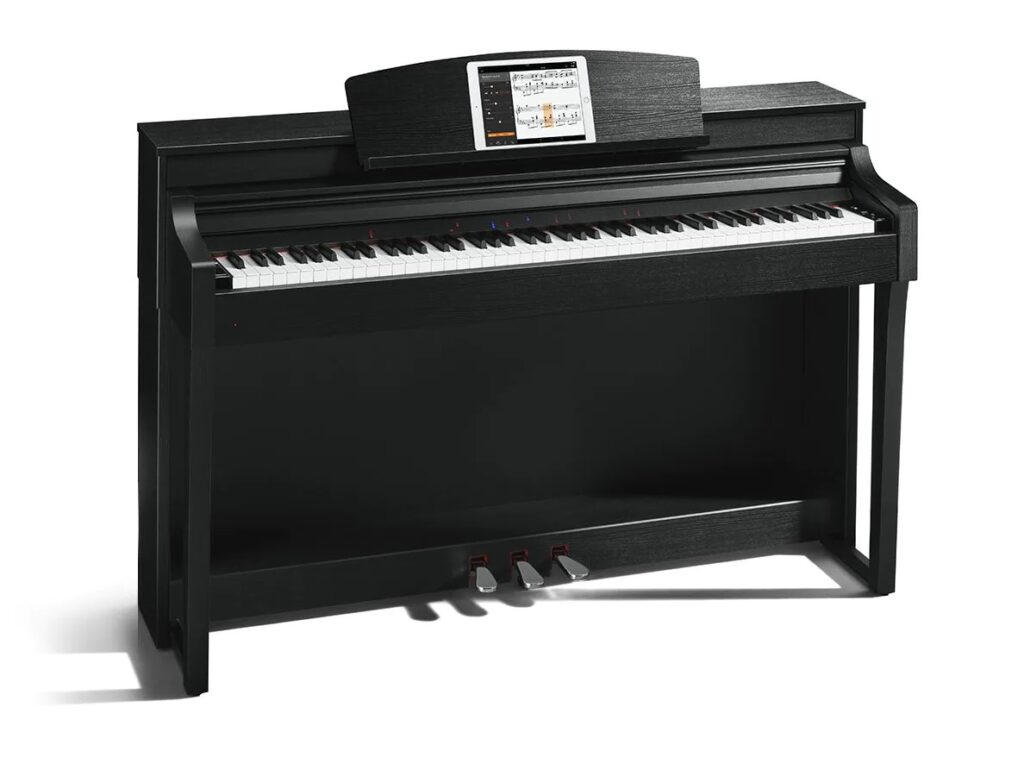Yamaha’s Genos2 Story – Behind the scene video is now available on Youtube.
As you might expect, it’s a combination of useful, factual information and sales puffery. So, here is my summary of the actual informational content minus marketing B.S. 🙂
00:00:00 Introduction 00:00:04 Martin Harris, R&D Center London 00:03:41 Junichiro Murata, DMI Strategy Planning Group 00:05:25 Stefano Ivan Scarascia, Design Laboratory 00:06:20 Yoshiyuki Hirai, Mechanical Design Group 00:07:53 Ryuichi Izumi, Mechanical Design Group 00:08:29 Tomoya Michiba, Hardware Design Group 00:10:00 Martin Harris, R&D Center London 00:12:45 Kyoko Ohno, Sound Design Group 00:16:08 Taichi Hiyama, Sound Design Group 00:19:19 Ending
R&D Center London is an extension of the Sound Design Group in Japan.
The sound development process is roughly:
- Planning which instruments and their playing techniques to develop
- Sampling using different microphones and articulations
- Mix-down from the different microphones
- Denoise the samples
- Loop the samples
- Map the samples to the keyboard
- Sound design (tweak voice parameters, add DSP effects, etc.)
New samples in Genos2: pianos, electric pianos, brass, tuned percussion, orchestral percussion and more. More layers, longer time before a loop.
Genos2 adds Style Dynamic Control: Full energy control over auto-accompaniment. Dynamically adjusts both velocity and volume.
Tilted the main screen to improve visibility by the user. Mitigate sun glare using anti-reflective film. Added LED lights to see the slider position on a dark stage. 360-degree rotating knobs use the set values as the starting point for control. Slider catch function to prevent jumps in value.
Industrial design: Try to adhere to the graceful lines of the original design. Increase visibility of the main screen and subdisplay.
Different shapes and coatings. Increase quality. The biggest problem in mechanical design is to accommodate the protrusions on the upper case (necessitated by the tilted displays). The case is created using two large molds. The top and bottom must be carefully aligned.
The LED lenses are designed to minimize light loss. The lens shape is optimized on the order of 0.1mm and allows light to disperse efficiently.
Electronic design of the audio output required a lot of experimentation. They tried so many different components, they wore out (broke) the PCB! The goal is to present the internal waveforms faithfully without distortion (good trackability). Designs are evaluated by listening and electrical analysis. Listening was performed in venues of different sized. Genos2 includes an USB audio interface.
FM synthesis adds dynamic capabilities. FM has seemless dynamic curve.
When the Yamaha LSI (SWP70) was designed, they wanted multi-timbral tone generation using both AWM and FM voices together to generate sounds.
Super Articulation and Super Articulation 2. SA2 voices use Articulation Element Modeling (AEM) tone generation. [SA2 demonstration] The SA2 voices were almost all recorded in Japan. To honor Japan, the team added Shakuhachi. The acoustic instrument tone seems to be constantly in motion, posing a challenge for sound design. You need to leave the original instruments flavor in the voice without making it intrusive.
Every waveform is evaluated for quality (technical check): presence of noise in the waveform or deficiencies in timbre, style, or voice parameters. Then, the waveform is evaluated musically, i.e., is the processed waveform musically natural? The behavior of an instrument must be realistically reproduced. Finally, there is a consistency check: Do the timbre and style data work together consistently.
Sound designers consider the musical genres to be played. A voice must perform musically whether its played by a musician or an auto-accompaniment style — even when the musician uses the voice in an unexpected way. Playing techniques are taken into consideration to determine the articulates to be sampled.
Genos2 waveform memory is big. It allows all 88 piano notes to be sampled. A little bit of noise in each note adds realism.
The new Genos2 drum samples leave more atmospheric components (a kind of noise) in the sound. A key decision is how much “noise” to leave in.
Copyright © 2023 Paul J. Drongowski


